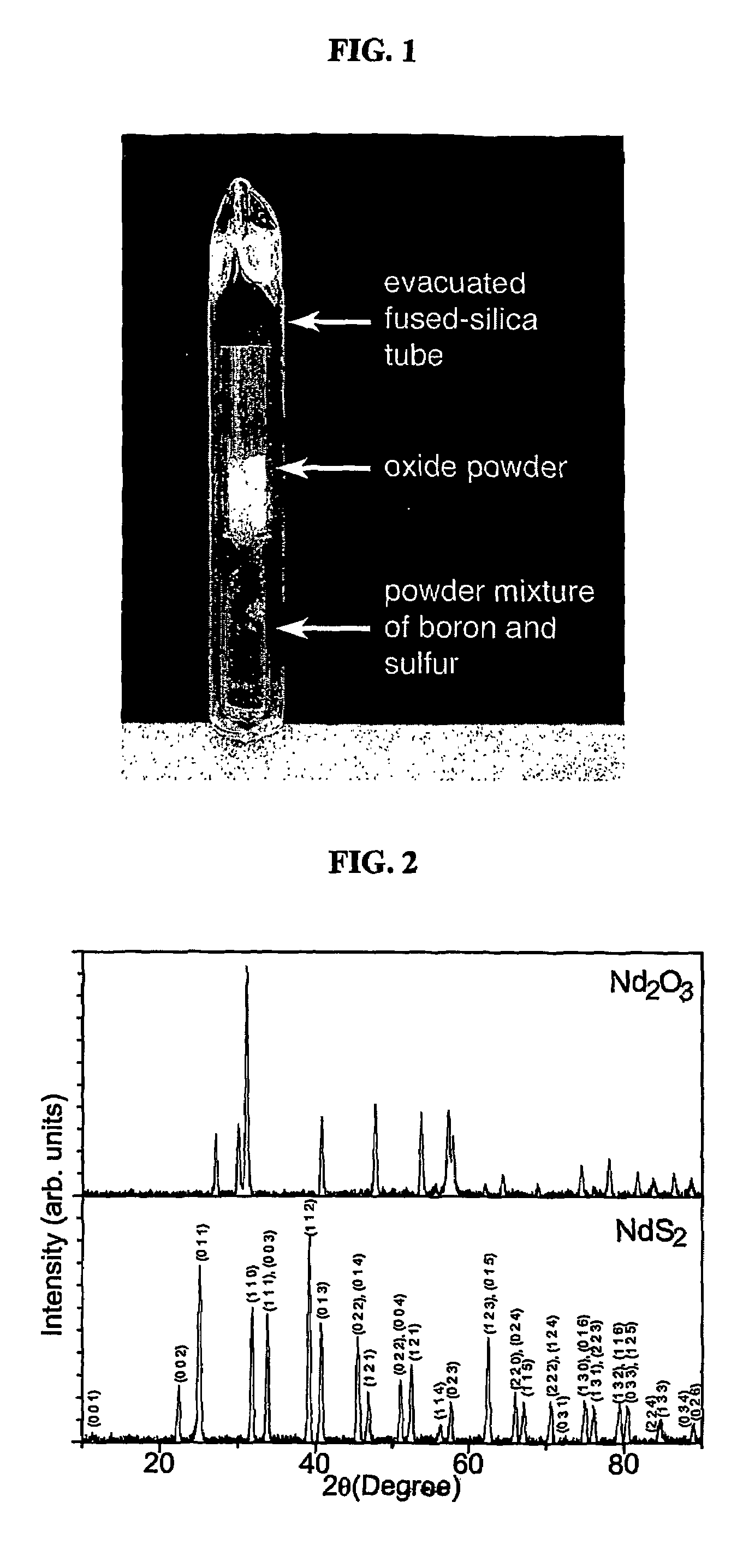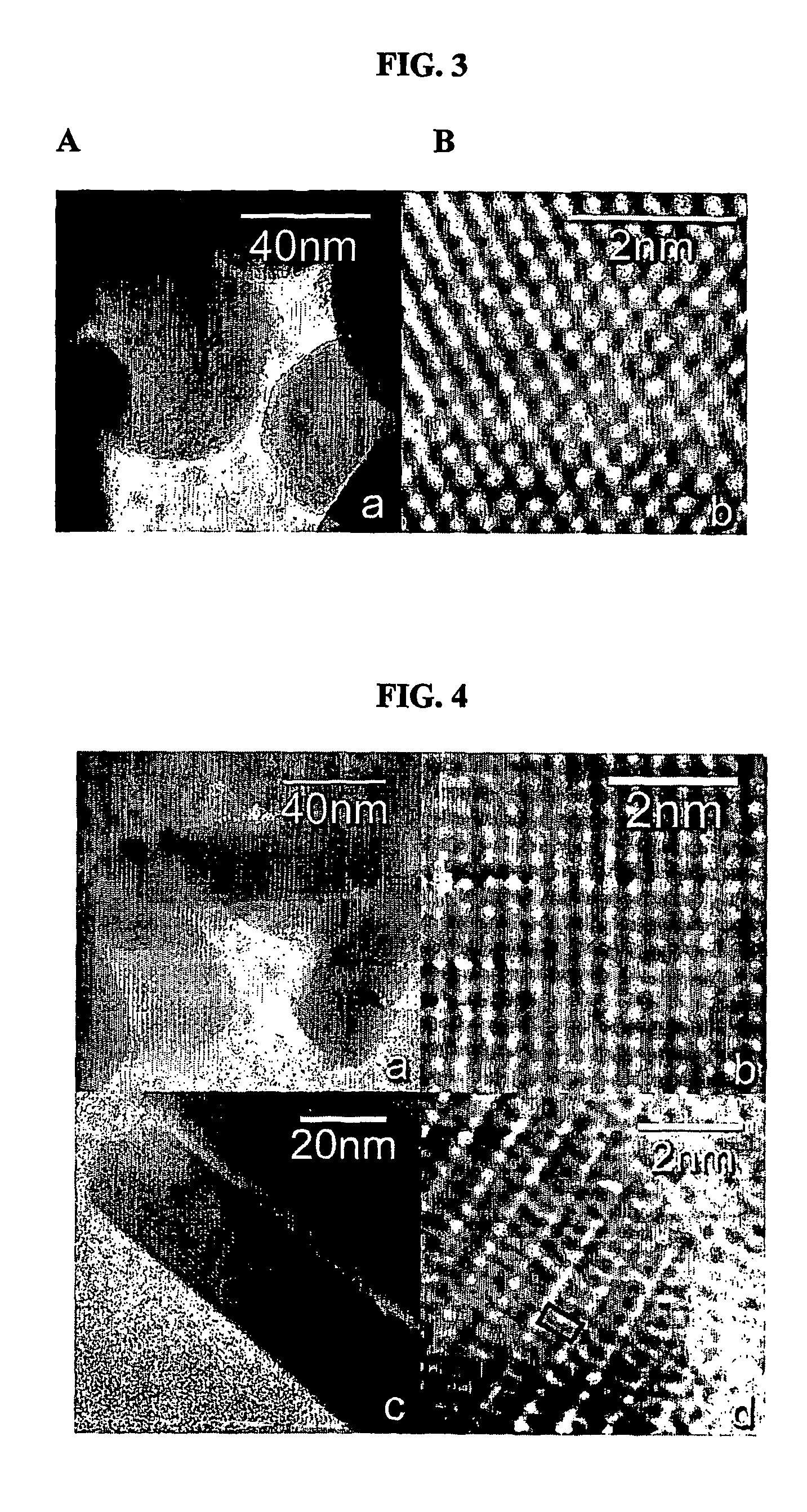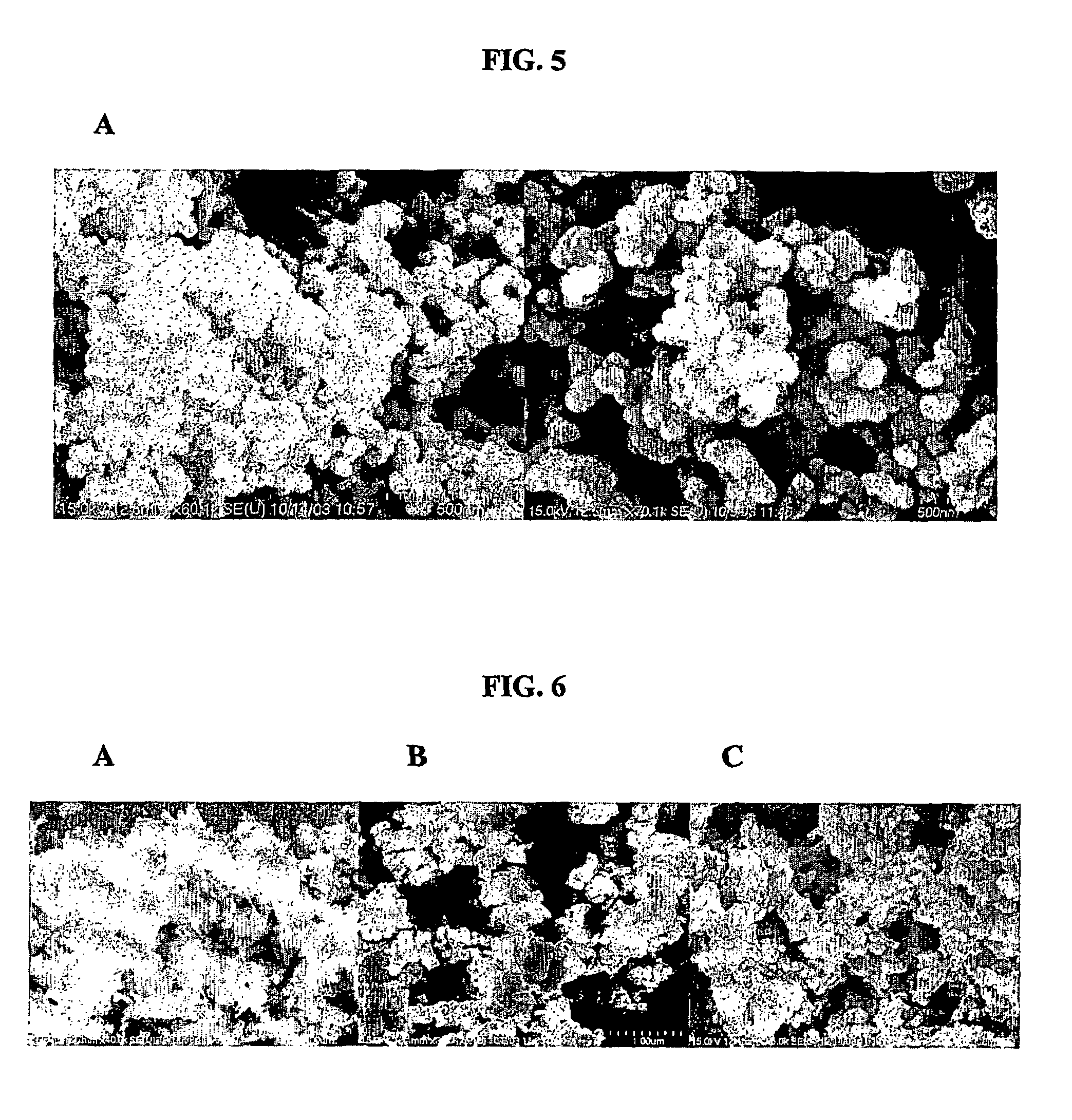Preparation of metal chalcogenides from reactions of metal compounds and chalcogen
a technology of metal chalcogenide and reaction reaction, which is applied in the field of synthesis of metal chalcogenide, can solve the problems of inability to efficiently obtain ssup>0/sup>, inability to efficiently use hsup>2/sub>s alone, and inability to achieve hsup>2/sub>s at low temperatures
- Summary
- Abstract
- Description
- Claims
- Application Information
AI Technical Summary
Benefits of technology
Problems solved by technology
Method used
Image
Examples
example 1
Formation of NdS2 Polysulfide Nanoparticles from Nd2O3 Nanoparticles
[0058]First, 0.337 g (1 mmol) of Nd2O3 powder (99.9%, 49-64 nm, Nanostructured & Amorphous Materials Inc., Los Alamos, N. Mex.) was placed in a short fused silica tube (FIG. 1). Excess amounts of amorphous boron (99.99%, 325 mesh, Alfa Aesar, Ward Hill, Mass.) and sulfur powders (99.999%, Alfa Aesar) were mixed in the molar ratio of 1:4 and placed in a separate fused silica tube of the same size. The two tubes were subsequently situated inside a larger silica tube container, with the tube of Nd2O3 on top of the other. After the whole container was evacuated and flame-sealed, it was gradually heated to 450° C., kept at the temperature for one day, and radiatively cooled to room temperature. The pale violet color of the original oxide powder turned into grayish yellow after the reaction. The silica reaction tubes were intact, with no visible corrosion on the inner surface of the tubes. FIG. 2 compares the powder x-ray...
example 2
Conversion of the Nanoparticles of Rare-Earth Oxides (Tb4O7, Ce2O3, Sm2O3, Er2O3 and Eu2O3) into the Nanoparticles of their Corresponding Disulfides (TbS2, CeS2, SmS2, ErS2 and EuS2)
[0063]The preparation method of NdS2 nanoparticles from Nd2O3 nanoparticles was applied to other rare-earth oxide nanoparticles with success. The products were all fine powders of the pure sulfides after sulfidation reactions at the temperature range between 350 and 550° C. The scanning electron microscopic (SEM) images of the products showed that the particle sizes varied significantly from 30 nm to ˜1 μm, and the sizes were smaller when the reaction temperature was lower. FIGS. 5-9 show the SEM images of the various nanoparticles. FIG. 5 lows nanoparticles of TbS2 (IA) from Tb4O7 nanoparticles (FIG. 5; average size=45-60 nm in diameter). The loaded molar ratio was Tb4O7:B:S=3:14:24. The preparation was heated at 450° C. for 24 hours. FIG. 6 shows nanoparticles of starting material Ce2O3 (FIG. 6A; avera...
example 3
Synthesis of Metal Polysulfides and Sulfides (TiS2, TiS3, VS4, FeS2, NiS2, NbS3, MoS2, RuS2, WS2, Y2S3, RS2 (R═Ce, Nd, Sm, Eu, Th and Er), In2S3, PbS, PbTe, BaTiS3, KInS2, NaInS2, NaInSe2, NaBiS2) from their Binary and / or Ternary Oxides at Intermediate Temperatures
[0065]Amorphous boron powder (99.99%, 325 mesh), sulfur powder (99.999%) and metal oxides (99.9% or higher) were purchased from Alfa Aesar. The reaction materials in the scale of mmol were loaded in a glove box or in air. In a general reaction scheme, a metal oxide in powder was placed in a short fused silica tube (FIG. 1). Stoichiometric amounts of boron and sulfur powders were mixed and placed in a separate fused silica tube of the same size. The reactant ratios were chosen to provide the most sulfur-rich phases in the phase diagrams at the designated reaction temperatures. To ensure a complete reaction of metal oxides, sulfur was loaded 10% more than the stoichiometric amounts. The two tubes were subsequently situated i...
PUM
| Property | Measurement | Unit |
|---|---|---|
| melting point | aaaaa | aaaaa |
| temperature | aaaaa | aaaaa |
| diameter | aaaaa | aaaaa |
Abstract
Description
Claims
Application Information
 Login to View More
Login to View More - R&D
- Intellectual Property
- Life Sciences
- Materials
- Tech Scout
- Unparalleled Data Quality
- Higher Quality Content
- 60% Fewer Hallucinations
Browse by: Latest US Patents, China's latest patents, Technical Efficacy Thesaurus, Application Domain, Technology Topic, Popular Technical Reports.
© 2025 PatSnap. All rights reserved.Legal|Privacy policy|Modern Slavery Act Transparency Statement|Sitemap|About US| Contact US: help@patsnap.com



